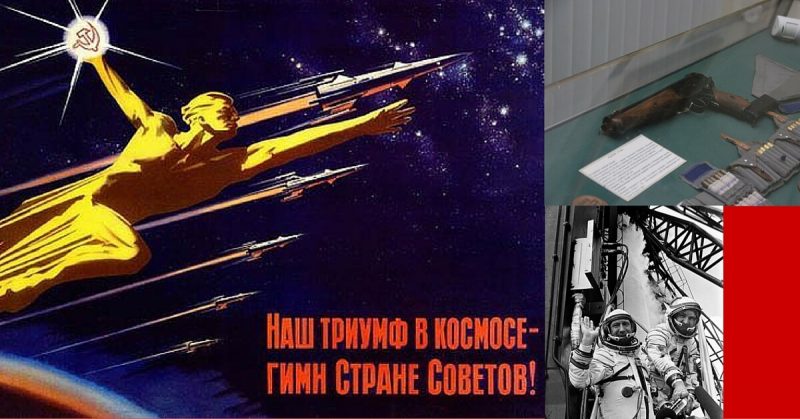If someone told you that Soviet cosmonauts were going to space armed with something that looks like a sawed-off three-barrel shotgun, would you consider it to be a fair defense against violent alien lifeforms? Would you consider it to be a precaution measure in case of unwanted visitors in space? Ellen Ripley, from the Alien Movies, would most likely approve of this.
The Soviets have a habit of carrying guns to space, even though firearms are not recommended in such environment, for fire is impossible to attain in the oxygen-free vacuum. That actually isn’t the main problem, for it is simply a question physics ― due to the Third Newton Law, the gun would simply backfire. Nevertheless, Soviet cosmonauts carried a standard issue pistol on their missions, until 1986, when it was replaced by the TP-82, the weird looking three barreled shotgun with a machete instead of a rifle butt.
No, it was never intended to be used in space.
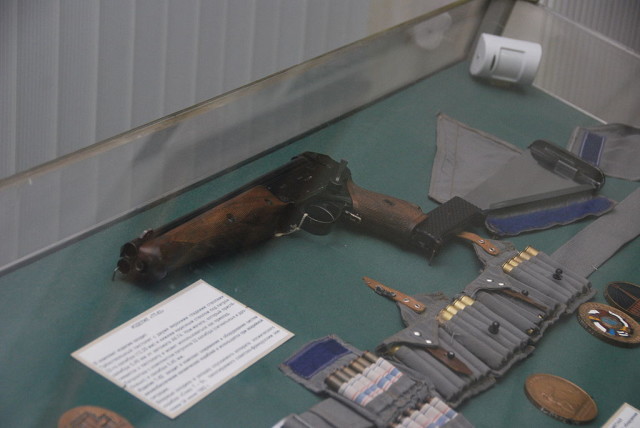
The TP-82 project was proposed by a Soviet cosmonaut, Aleksey Leonov, who came to prominence after conducting the first ever spacewalk on March 18, 1965, when he exited his capsule, during the Voskhod 2 mission, for a 12-minute walk in the open space.
The walk itself wasn’t exactly a stroll in the park, for he experienced many problems with his space suit. His suit inflated and became stiff in the space vacuum, due to technical issues. Leonov became too large to enter the hatch in his capsule. He broke the airlock entry protocol, on his own risk, and released some air out of the suit. Now he was experiencing a lack of oxygen but managed to get into the capsule.
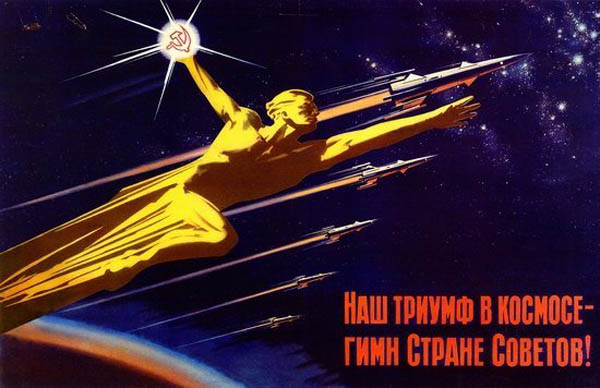
With him was his commander, Pavel Belyayev. The two continued with the mission and headed to Earth. As if the spacewalk wasn’t troubled enough, they were forced to land using manual controls since the automatic landing system went offline. The spacecraft entered the orbit and started to spin without control. The team managed to regain control and activate the parachute which landed them safely. It was planned that they land in Kazakhstan, but they had to reach for an alternative ― dense forests of the Ural Mountain close to the Soviet city of Perm.
Not too close, though. They were 100 miles away from civilization. Luckily, both cosmonauts were accustomed to wilderness, Leonov being from Syberia and Belyayev from Vologda north of Moscow. The woods were swarming with wolves and bears. Also, it was mating season, which contributed to the aggressiveness of the predators.
They were armed with nothing but a single pistol, which would probably only wound a 600-pound brown bear, enraging him even more. Shooting at him with such a small caliber (considering his raw strength) was like signing your own death sentence. Since the forest proved to be impenetrable by foot, the pilots spent the night in the woods, supplied with warm clothes and food by a helicopter which hovered above.
The following day, a rescue party on skis managed to reach them, but they were also forced to spend the night in the forest. On the second day of their landing, Leonov and Belyayev finally reached the designated landing point, miles away from their initial landing site, and were transported via helicopter to the Baikonur Cosmodrome in Kazakhstan, for debriefing. Fortunately, the two cosmonauts didn’t encounter any dangerous animals during the two days they spent in the woods, but reports later stated that the helicopter crew saw bears in the area.
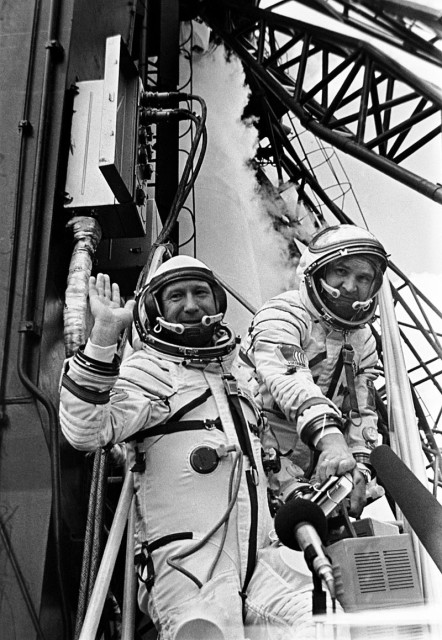
But the experience stuck with Leonov particularly. He reported afterward that he felt helpless because his fate was in the cruel hands of nature. So he proposed a special gun to be built, a survival tool for stranded cosmonauts. It was to be part of the Granat 6 survival kit, which included gloves, waterproof matches, a compass, batteries and other useful gadgets. In 1981, the project was approved. The weapon was kept secret, but its existence was well-known. Just last month a Russian cosmonaut, Sergei Ryazanskiy gave an interview to the Russian press, where he mentioned the TP-82, which is out of use since 2006:
“That was an absolutely unique weapon – two smoothbore barrels and a rifled one. You needed it to fight off bears and wolves who might jump at you after you had landed”
The upper two smoothbore barrels used 12.5×70 mm ammunition (40 gauge), and the lower rifled barrel used 5.45×39mm ammunition. The pistol could be used for hunting, to defend against predators and for visible and audible distress signals. The detachable buttstock was a machete that came with a canvas sheath. It was a sturdy, simple weapon, designed to work in harsh, winter conditions.
The Granat 6 portable survival kit included a belt that packed three kinds of ammunition. The belt contained 11 rounds of SP-P 5.45 x 39 ammunition for the rifle barrel. Although the same caliber as the AK-74, SP-P rounds contained soft points, which meant that the bullet was to expand and flatten on impact, causing much more damage. The machete proved to be the most useful part of the gun, for it could be used for wood chopping, clearing paths, or cutting bricks of snow, necessary for building an igloo.
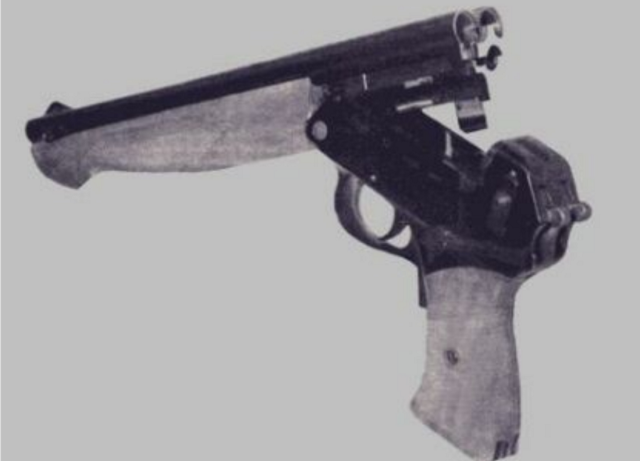
The practice wasn’t new, actually, for the Luftwaffe pilots during WWII had a survival kit that included a hunting rifle, the M30 Luftwaffe drilling, in case a pilot was shot down and needed to wait for a rescue team in a remote forest.
The TP-82 saw active service from 1986 to 2006, accompanying cosmonauts on space missions, but with the wider use of GPS technology, the gun became obsolete. The custom made ammunition passed its expiration date and after the fall of the Soviet Union, it just wasn’t made anymore.
Nevertheless, the gun had its purpose and the story of the Voskhod 2 incident was well-known among the cosmonauts. The Soviet “better safe than sorry” policy, adopted by the Russian Federation, became questionable after many cosmonauts stated that they don’t feel comfortable having a gun aboard the spaceship for psychological reasons, but a high-powered Makarov is still part of the NAZ survival kit used today.
